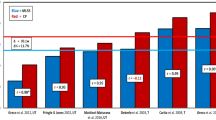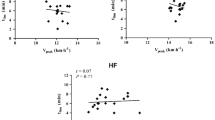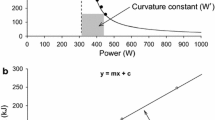Abstract
Although critical velocity (CV) provides a valid index of aerobic function, the physiological significance of CV is not known. Twelve individuals performed exhaustive runs at 95% to 110% of the velocity at which V˙O2max was attained in an incremental test. V˙O2max was elicited in each run. Using the time to exhaustion at each velocity, CV was calculated for each participant. Using the time to achieve V˙O2max at each velocity, which was shorter at higher velocities, a parameter we have designated as CV′ was calculated for each participant. During exercise at or below CV′, V˙O2max cannot be elicited. CV (238 ± 24 m · min−1) and CV′ (239 ± 25 m · min−1) were equal (t = 0.60, p = 0.56) and correlated (r = 0.97, p < 0.01). These results demonstrate that CV is the threshold intensity above which exercise of sufficient duration will lead to attainment of V˙O2max.
Similar content being viewed by others
Author information
Authors and Affiliations
Additional information
Accepted: 24 July 1998
Rights and permissions
About this article
Cite this article
Hill, D., Ferguson, C. A physiological description of critical velocity. Eur J Appl Physiol 79, 290–293 (1999). https://doi.org/10.1007/s004210050509
Issue Date:
DOI: https://doi.org/10.1007/s004210050509




